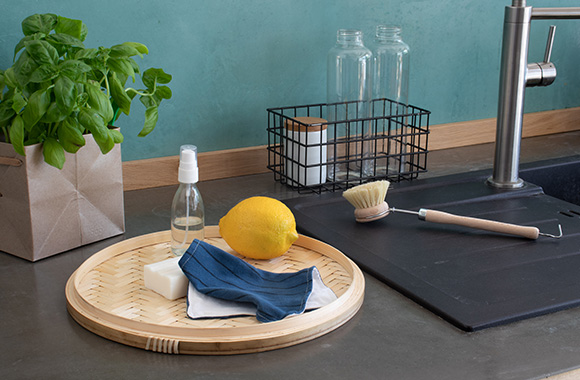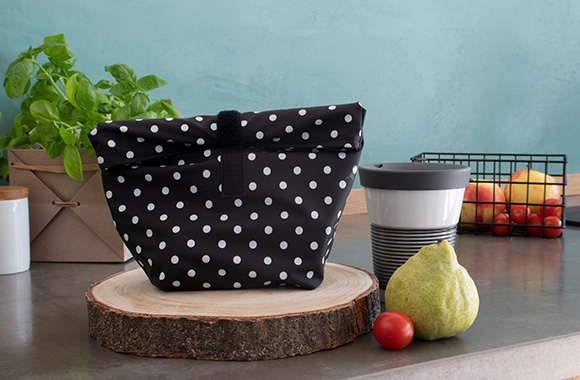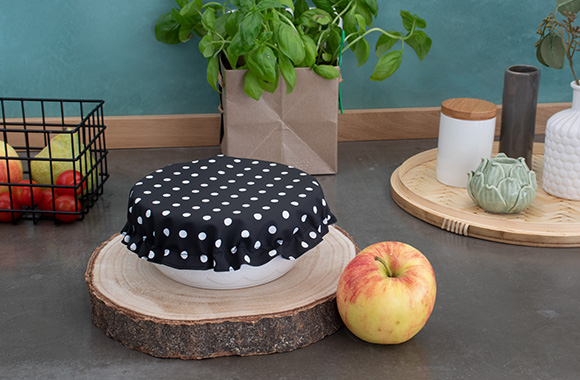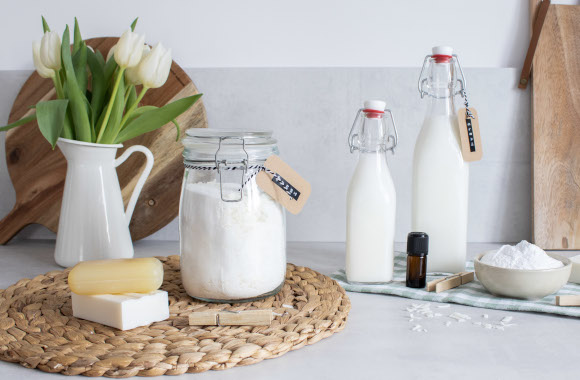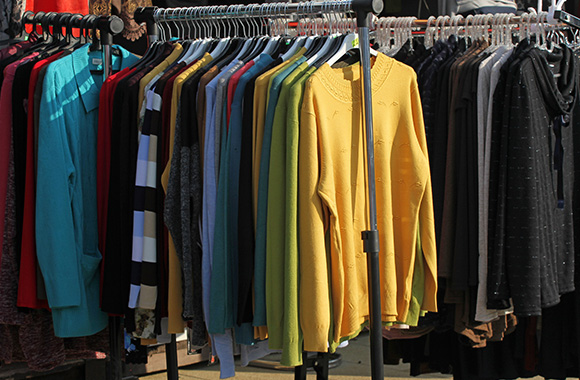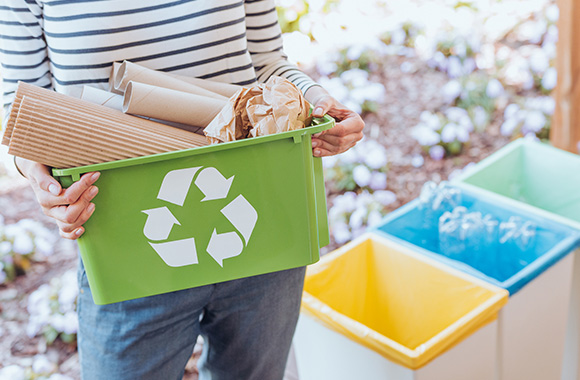Step-by-step instructions on how to make your own beeswax wraps
Aluminium foil and cling film are often used in the kitchen to keep food fresh. They can be used for keeping leftovers in the fridge fresh or for packing some sandwiches for a day out. People tend to use it once and then throw it away. Today, more and more people are looking for environmentally friendly alternatives. A good alternative is a wax wrap, which you can easily make yourself. Below you will find step-by-step instructions on making a beeswax wrap with just a few basic materials.
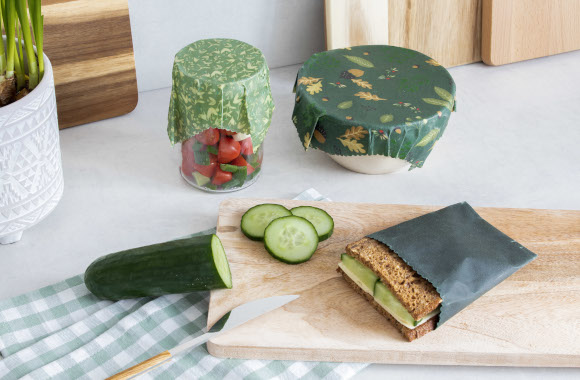
Contents:
DIY beeswax wraps: materials needed to make homemade beeswax wraps
You will only need a few things to make your own beeswax wraps:
- Spare pieces of fabric
- (Fabric) scissors or pinking scissors
- Organic beeswax
- Coconut oil if needed
- Baking tray, greaseproof paper and an oven
- An iron and ironing board if needed
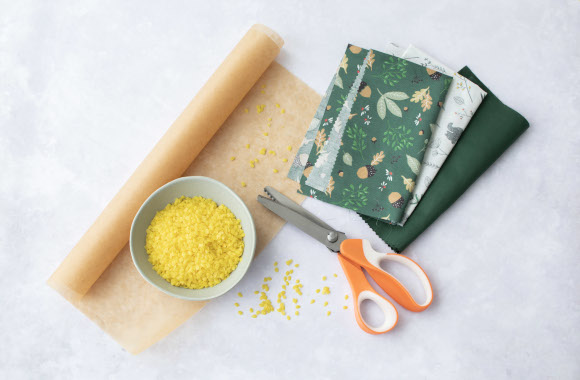
DIY beeswax wraps: preparing your material and beeswax
It's best to use spare pieces of fabric made from organic cotton or organic linen for your beeswax wraps. Ideally, your fabrics are undyed or they have been washed several times. The fabric you are going to use should not be too thick so that your beeswax wraps stay mouldable.
1. Cut out the fabric
Cut your fabric to the required size, such as 30x30cm for large bowls or 25x25cm for sandwich bags. The beeswax will later smoothen out around the edges, so you don't have to trim them. Try and use pinking scissors as your wrap will fray less quickly.
2. Prepare the beeswax
Grate the beeswax into smaller pieces. You can also use special beeswax pastilles, which you can buy from your local beekeeper. When buying beeswax make sure that it is safe to consume. This is important so that no harmful substances will contaminate your food.
A lot of instructions on making beeswax wraps recommend oiling your fabric beforehand so that the homemade beeswax wrap becomes smooth. You can use coconut oil, but don’t use any oils, which are air or light-sensitive (such as linseed oil or cold-pressed olive oil) as they can quickly go off. You can also make them without using any oil.
A lot of instructions on making beeswax wraps recommend oiling your fabric beforehand so that the homemade beeswax wrap becomes smooth. You can use coconut oil, but don’t use any oils, which are air or light-sensitive (such as linseed oil or cold-pressed olive oil) as they can quickly go off. You can also make them without using any oil.
Instructions on how to make a beeswax wrap: making beeswax wraps in the oven
Here’s how using an oven is the easiest way to make beeswax wraps:
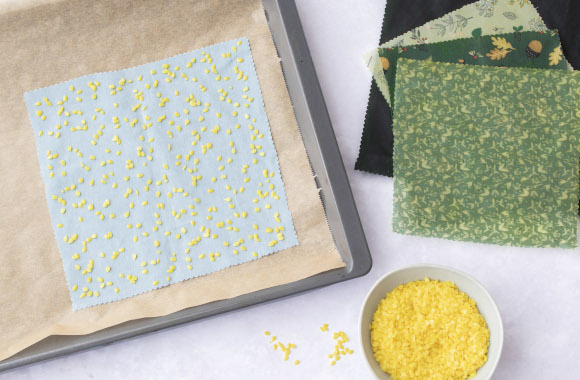
- Put the cut-out fabric on some greaseproof paper on the baking tray.
- Spread the wax pastilles or pieces of beeswax evenly out over the piece of fabric. It is recommended for medium-sized wraps to use about 15 to 20 grams of wax per wrap.
- You don’t need to preheat the oven. Put the baking tray into the oven and set the temperature to approx. 70 to 80 °C.
- Wait until the wax pastilles have melted. This will take around 5 to 10 minutes.
- Let the beeswax wraps dry on the baking tray. Use a washing line to hang them up if you want to make several wraps at once. Be careful when the wraps come out of the oven as they will still be hot.
If the wax didn’t spread evenly whilst baking, then iron the wrap carefully on the lowest setting by placing it between two pieces of greaseproof paper.
Instructions on making homemade beeswax wraps: making beeswax wraps with an iron
You can also make beeswax wraps using an iron. Start by placing your pieces of fabric on greaseproof paper and then spread the beeswax pastilles onto them:
- Now put the second piece of greaseproof paper over the fabric with the beeswax pieces.
- Set the iron to a medium temperature and gently iron over the wrap until the wax has melted.
- Check that the wrap is evenly covered to the edges and then leave the wrap to cool.
- Excess beeswax can end up sticking to the edges of the wraps whilst using an iron. Once it has cooled, you need to remove the excess beeswax from the edges.
If you choose to make wraps using an iron, you can make several wraps at once. To do this, put another layer of fabric over the fabric with the wax pastilles, but you will also need a little more beeswax to soak both wraps.
Children can also help to make some beeswax wraps, but make sure that an adult completes the steps where an iron or an oven is needed. Children can spread the wax pastilles over the cut-out fabric and they can also hang up any cooled wraps to dry. Older children could help to cut out the fabrics.
Children can also help to make some beeswax wraps, but make sure that an adult completes the steps where an iron or an oven is needed. Children can spread the wax pastilles over the cut-out fabric and they can also hang up any cooled wraps to dry. Older children could help to cut out the fabrics.
How to use beeswax wraps
You can use homemade beeswax wraps to cover food items or to cover bowls and tins. The beeswax wrap becomes malleable through your body heat and adheres when you press the edges of the wax wrap against a bowl with your hands.
You can cover fruit, vegetables, bread or leftovers with a beeswax wrap. Do not wrap any raw fish or meat in the wrap, as it cannot be washed to kill any bacteria. Beeswax does contain some slight antibacterial elements, but this is not enough to kill off any bacteria.
Fatty foods such as sausages, cheese or cakes can cause wax components to dissolve and these then pass onto the stored food.
If you want to make some vegan wax wraps you can use soy wax, rapeseed wax or carnauba wax. Follow the exact same steps as the beeswax wraps to create a vegan wax wrap. The vegan wraps may not hold as well and you may need to use a rubber band to hold them in place.
If you want to make some vegan wax wraps you can use soy wax, rapeseed wax or carnauba wax. Follow the exact same steps as the beeswax wraps to create a vegan wax wrap. The vegan wraps may not hold as well and you may need to use a rubber band to hold them in place.
Shelf life of homemade beeswax wraps
You can use a beeswax wrap for about two to three years; however, this depends on how well they are kept. Keep your wax wraps fresh by ironing them again or putting them in the oven to stop them from falling apart. You might need to use a couple more beeswax pastilles.
If you notice that your beeswax wraps smell like expired food or if there are some mouldy patches, then they need to be disposed of.
By cutting discarded beeswax wraps into small strips, they can be used on barbecues or for a fire. Natural materials such as organic cotton and organic linen are good for wraps as they are compostable. If you do not have your own compost bin, then beeswax wraps should be disposed of in the residual waste.
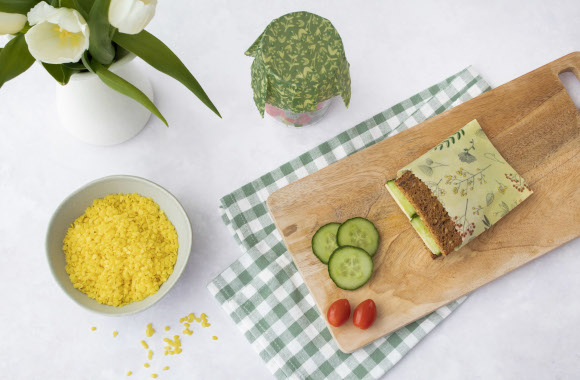
How to clean and take care of your homemade beeswax wraps
Beeswax wraps should not be exposed to heat or cleaned with cleaning products containing alcohol, as it dissolves the wax. The wraps cannot be put into the dishwasher or washing machine.
Instead, rinse your homemade beeswax wraps with cold or lukewarm water and use a mild dish soap. For stubborn stains gently rub them with a sponge but be careful not to remove the wax. If you want to disinfect your beeswax wraps, you can use vinegar. You can also use the oven to refreshen the wraps up.
You can hang them up on the washing line to dry or put them on a dish drainer. Do not put the beeswax wraps on the radiator or in the sun to dry.
Summary: homemade beeswax wraps are a good alternative to aluminium foil and cling film
Beeswax wraps are versatile and long-lasting if they are taken care of. They are also a more environmentally friendly alternative to using aluminium foil or cling film. It’s great for DIY beginners and for children, as you don't need a sewing machine to make them.
References
https://www.awesomeinventions.com/
(Accessed on 06.04.2022)
https://ecofamilylife.com/
(Accessed on 06.04.2022)
https://mindseteco.co/
(Accessed on 06.04.2022)
https://superbee.me/taking-care-of-your-reusable-wax-wrap/
(Accessed on 06.04.2022)



